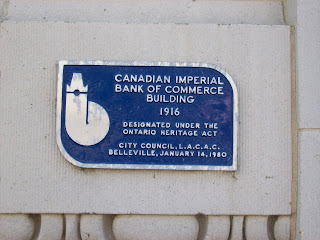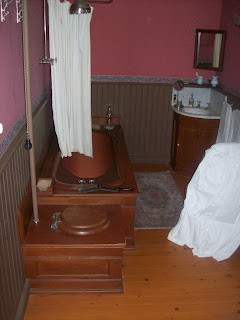A large part of Belleville’s heritage is the Loyalists. During the American Revolution many Americans sided with the British and when they lost the war many found their way into Canada. The Loyalist tradition is incredibly strong in places like Belleville. The Loyalist traditions are remembered in Belleville in many different ways. For instance, the local college is Loyalist College. A main road is Wallbridge-Loyalist Road. In many ways, the Loyalist presence is still felt by the residents of Belleville.
 |
| Loyalist College Logo Photo Credit: Anne Duffy |
Captain John Meyers was originally a tenet farmer located in Albany, New York. He sided with the British when war broke out and reported to the British commander in 1777, located in Montreal. Throughout the American Revolutionary War Meyers was an American spying for the British.
 |
| Meyer's Mill Photo Credit: Anne Duffy |
At the end of the war John Meyers moved his family to Canada and finally settled in the Quinte region in 1787. Meyer’s is celebrated in Belleville as the founder of the city. The novel Meyer’s Creek is based on his family and names several Belleville landmarks. Additionally, places like Meyer’s Pier are named after John Meyers.
 |
| Meyer's Mill Plaque Photo Credit: Anne Duffy |
John Meyers built a mill in approximately 1792 that was designated as a heritage site in 1978. The mill now sits in a park taken care of by the Lions Club and the mill is now the headquarters of the Quinte Construction Association.
 |
| Lions Club Marker Photo Credit: Anne Duffy |
John Meyers is celebrated as the founding father of the city. Meyers contributions also go beyond the local level. Meyers helped to fight alongside the British with the United Empire Loyalists, which also helped to bring English settlers into Canada. As the founding father of the city and as the builder of the mill Captain John Meyers led to the founding and future development of the city.
 |
| Lions Club Park Photo Credit: Anne Duffy |
The Loyalists represent a loyalty to the mother country and a resistance to the American fighters during the American Revolutionary War. For the residents of Belleville the Loyalists represent a large part of the city’s history – it was founded because of the Loyalists. As a result, the Loyalist tradition is represented in its heritage sites, its schools, and its roads. The city of Belleville chooses to remember the Loyalists in these ways. It connects Belleville to a national story as well as to the very beginnings of the city. This is why the city of Belleville chooses to place such an emphasis on the United Empire of the Loyalists.






























